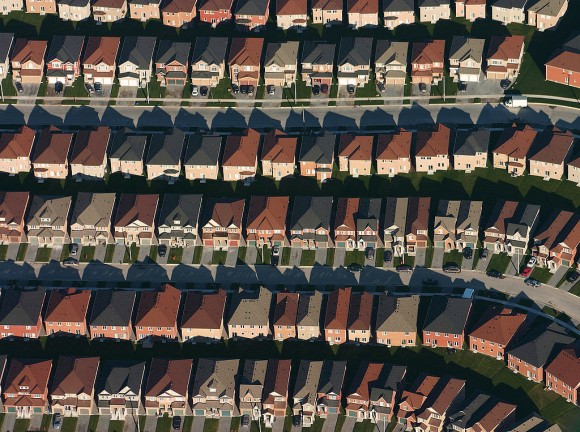aNewDomain — The same technology that’s designed to make us more connected often impedes and thwarts connecting. We end up ironically isolated, disconnected, unsure of what’s even going on in our immediate neighborhood.
Nirav Tolia says he got that feeling and, in response to it, he created a new social media platform called Nextdoor. Its mission is to leverage today’s tech and wired culture to bring back a sense of community in the real world neighborhoods where we actually live.
Funded by Greylock to the tune of $15 million in Nextdoor, the platform has signed up nearly 50,000 neighborhoods all across the United States since its launch in October 2011. It’s exploding.
What’s interesting about Nextdoor is that it’s entirely different from other online social media networks out there. You have to join as an individual — never as a family, group, business or other organization. And you must use your full name — your real name — when you join. And you have to submit a real picture of yourself. That’s because, in order to join, Nextdoor needs to ascertain that you’re a real person who actually lives in the neighborhood you say you do. It’s a local platform — and a social one. And, necessarily, it also is an intensely private one.
There are reasons to feel good about that. Nextdoor never allows government agencies to access your private conversations or information. It only allows local government agencies to post emergency alerts and other highly targeted information of community importance through its Nextdoor for Public Agencies program. And Nextdoor also guards your private information against pilfering by search engines and third-party advertisers.
How To Create a New Nextdoor Neighborhood
If you decide to join Nextdoor and your neighborhood is not yet on there, you are given the privilege — and responsibility — of bringing it on board.
To do this, you must give your neighborhood a name and then tell Nextdoor why you want to make it a part of the neighborhood network on the platform. Once you submit that, the system asks you to look at an online map of your area and draw the boundaries indicating your neighborhood. The guideline is that you’re to include 100 to 2,000 homes within your Nextdoor neighborhood. This can be time-consuming if you need to consult a separate map of the area where you live in order to complete this task.
 Once you’ve drawn the boundary lines, your proposed neighborhood’s website is created. Nextdoor then starts you on a 21-day trial period, during which you must get at least nine of your neighbors to agree that those boundaries are acceptable. The idea is to build a community total of at least 10 residents. If you can’t accomplish this, someone else will be given the chance to make it so.
Once you’ve drawn the boundary lines, your proposed neighborhood’s website is created. Nextdoor then starts you on a 21-day trial period, during which you must get at least nine of your neighbors to agree that those boundaries are acceptable. The idea is to build a community total of at least 10 residents. If you can’t accomplish this, someone else will be given the chance to make it so.
What Good Can Come from Nextdoor?
While some aspects of Nextdoor initially seem like a hassle, if you can manage to join and create your neighborhood group, you’ll find this social network well worth it. You’ll actually get to know your neighbors as real people, not just characters who walk dogs by your house or bring out the trash. And you’ll know them better than you do others in your online communities, where humans seem more like avatars or online profiles than actual people.
That is how it should be. Knowing your neighbors is way of strengthening social bonds, cooperation, organization and trust within the community. It leads to greater awareness of interesting or important local events. It gives you access to important local information, whether you are hunting for the best babysitters to local crime reports to neighbors who can lend you a power drill. It’s a real treatment for the profound disconnectedness you get from being online all the time.
For aNewDomain, I’m Brant David.
Cover image: <em>by IDuke (this edited version: Sting) [<a href=”http://creativecommons.org/licenses/by-sa/2.5″>CC BY-SA 2.5</a>], <a href=”http://commons.wikimedia.org/wiki/File%3AMarkham-suburbs_aerial-edit2.jpg”>via Wikimedia Commons</a></em>
Second image: “Untitled” by Cybil Pallugna-Saenz via Flickr Creative Commons














The LAST thing the world needs is another “social” media platform!
Another “usual” one, yes. This is a unique one. It’s almost the antisocial media platform. (Ha!)